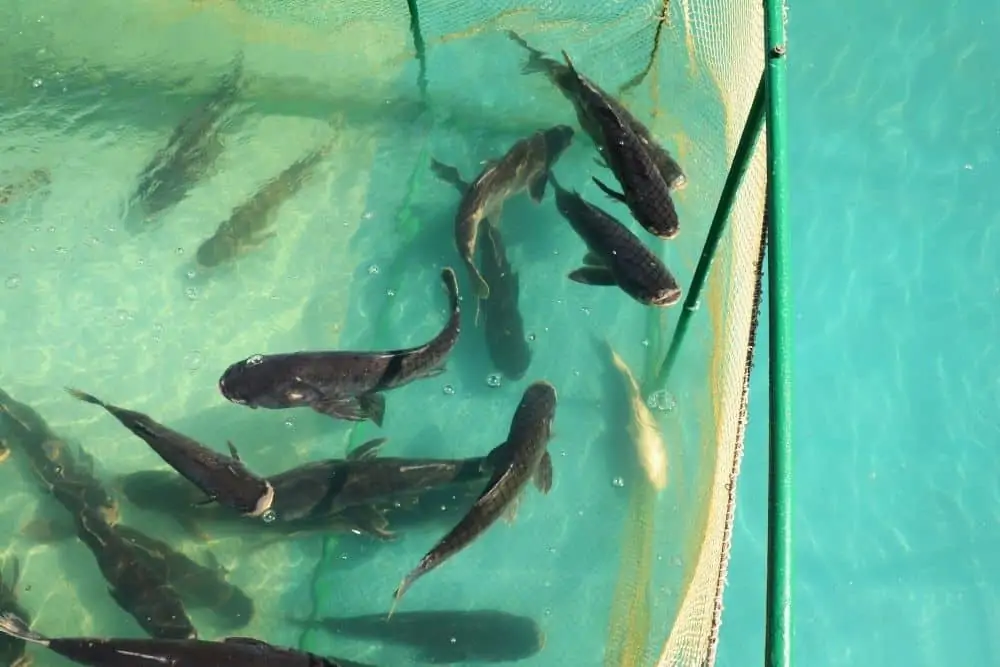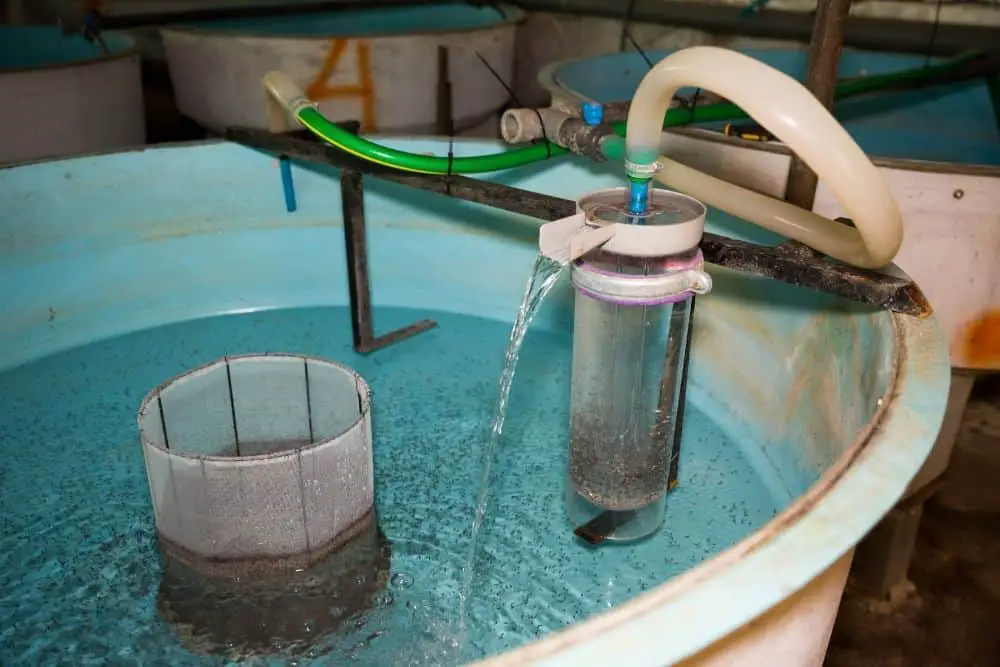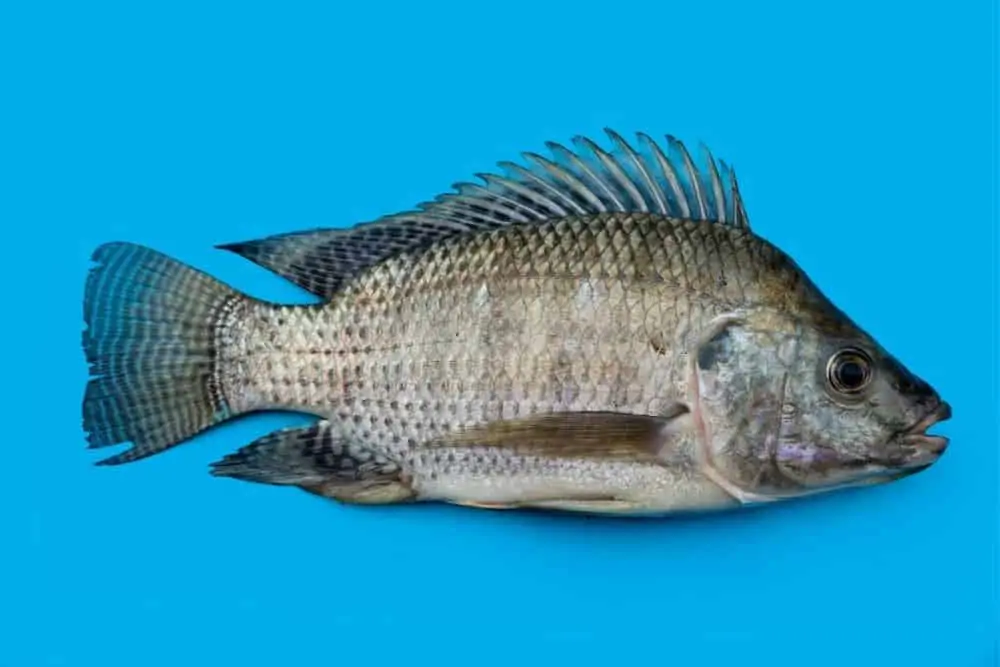
Sharing is caring!
Fish are an excellent source of protein. However, raising them for food can be hard, and many people do not know how to do it appropriately. In this short article, we will take a look at the progression of aquaculture throughout history, as well as some manner ins which you can raise fish for food in an eco-friendly method.
Raising Fish for Survival Food
Raising fish for survival food is a healthy option to store-bought. Raising your own can be done on any small scale in backyard ponds, swimming pools, or tanks, and this article will cover the essentials of raising fish with aid developing self-sufficient needs, including breeds that work best, devices needed, and appropriate care.
Raising fish as a hobby is a fantastic way to unwind and hang around with friends and family. You can fish with the kids, enjoy seeing the fish and learn how to take care of them. There are lots of breeds of fish for you to choose from, and there may be some that you might have never ever even heard of before.
There specify actions that should be followed for healthy growth of your baby guppies, such as feeding and keeping the water clean. This article will examine those steps to offer you insight into raising your own guppies for food or just for enjoyable.
Commercial Aquaculture Methods vs Home Aquaculture Techniques
Business aquaculture — There are two general methods in commercial aquaculture: intensive and extensive.
Extensive aquaculture — The practice of comprehensive aquaculture relies on making use of big ponds.
Extensive aquaculture — The practice of extensive aquaculture is an outcome of tank management to produce a large quantity in as small a space as possible.
Raising fish at home can be a great method to conserve cash and have more control over the quality of your fish. It can be a great deal of work and is not for everybody. Research thoroughly before you start because there are expenses related to the start-up procedure in addition to learning curve that will require to be mastered also. However, it does require time prior to you’ll see any return for all that work!
Raising Fish in a Farm Pond
Your backyard could be a fish tank. For some individuals, the house variation of aquaculture might simply be a farm pond in their back yard. These ponds are perfect for those who want to raise and grow carp or other small fishes such as Tilapia since they do not require any unique devices like filters or heaters. If you have a pond on your residential or commercial property, stocking it with regionally suitable fish is relatively easy.
Crappies, bass, and bluegill are all viable options for larger ponds. The key elements to consider when deciding what fish will work best in your pond consist of depth (to make sure the water doesn’t freeze) and temperature level protection from summer season heatwaves.
If your pond can have an environment, then you will not need to manage it or feed it. A considerable disadvantage of a farm pond is the procedure of harvesting. There are no excellent approaches to catch your fish at a mass scale, so you will require to do it the conventional method. This implies that you have to catch the fish one-by-one, with a fishing rod.
You’ll be able to enjoy a good meal of fresh fish anytime you desire, all you have to do is a bit of fishing. Your pond will offer the best place for you and your friend or family at all times!
Fish Ponds in Warmer Climates
In warmer climates, a shallow pond may be stocked with Tilapia. These fish offer many advantages over other types in warm areas as they are quick growers and ready breeders while being excellent eaters too! When fishing for them near ponds, you can utilize seine webs to catch these scrumptious freshwater creatures that grow well in tropical climates.
If you want to increase your production by feeding the fish an industrial feed. There are lots of numerous fish feeds developed to match various requirements. Purina makes a feed for people who want an organic choice, and there’s constantly some excellent food around if you understand where to look!
If you’re trying to find a hands-off technique to maintaining your aquaponics system, then the laissez-faire method might be just right. This strategy will need less equipping density and slower grow-out time however will produce totally free food!
Raising Fish in Tanks

If you live in a cooler environment or wish to produce Tilapia fish, tank culture is the very best way to succeed. The sturdy Tilapia can tolerate a broader range of water conditions than many types.
The range of Tilapia you choose will figure out the temperature level variety in which they are comfortable. For instance, some blue Tilapia pressures can make it through in water temperature levels as low as 48 degrees, however they will only grow if the temperature is warmer than 70 degrees.
It takes about 8 months to grow a fish from being fry to fillet. If you prepare your raising activities correctly, the cycles can quickly be timed for warmer seasons in many locations of the continental United States.
We have actually constantly been creative about what we use as our fish-holding locations gradually. From large fiberglass floatation gadgets that had their tops eliminated after they were sitting on land or brand-new building sites waiting weeks or months before being required, all different type of containers such as plastic tubs, containers, even ice chests: anything can be made into a short-lived fish-holding area. You simply need to have a little creativity to get the job done.
Filter System for Raising Fish in Tanks

Our filter system is important to keeping the water in your pond looking tidy and healthy. The 25-gallon stock tank houses our pump, which pumps 750 gallons of tidy tap water per hour into a five-gallon container via some lava rock and gravel for filtration functions. 12-volt pumps are available if you’re fretted about power failures!
Lava rocks have holes and pores that have good bacteria. These germs can help keep the balance in your aquarium. You will want to get some lava rocks for your fish tank if you want it to be a cleaner and much healthier location for your fish to live.
To make a filter, take a bucket and put holes in it. Make them about 6 inches from the bottom of the pail. Put that container in the middle of your tank with rocks around it. Fill the rest of your tank with rocks too, but only within 3 or 4 inches from the top so no water can get out.
The water pump remains in the middle of the container. The gravel and lava rock offer a location for bacteria to absorb fish waste and clean the water. The pail, and placement of holes, make sure that all water will go through gravel.
The pump system is designed to make life easier for fish owners! It moves water backward and forward between the filter tank, which helps keep the water clean by removing dirt and debris. This also avoids an overflow from occurring in your fish tank when you forget to turn off a faucet or hose pipe close by while filling your pool with fresh drinking water.
If you wish to keep your fish alive, constantly pump water in and not out of the tank. That method, if a pipe breaks, it will just be the pump that gets burned up rather than all of those poor little dead fishes in an empty tank!
You may have seen those gorgeous undersea gardens in a tank at your local family pet shop, however did you know that these are natural aquatic plants? Water plants can be kept in the pool to absorb more waste and excess nutrients. They make a perfect living environment for fish and complimentary food for them likewise– unless it ends up being too severe with algae development!
Identifying Your Perfect Grow Season for Raising Fish
While it’s best to complete your grow-out during warmer months, often that just isn’t possible. To keep the water at a comfy temperature level for fish even in cold weather time you’ll require a fish tank heating system!
One idea is to put the fish tank in a greenhouse. This will permit you to totally take advantage of any sunshine that comes from outside, and it likewise suggests your Tilapia will get all of its natural light inside too! Some states like Missouri require this for raising Tilapia anyway since they do not want them “getting away.”
Fish Tank Heaters for Raising Fish
Fish requirement to be kept warm during the winter season, and due to the fact that many fish tanks are outdoors, you might not have sufficient heating for your fish. A variety of approaches can assist with this, including utilizing a large outdoor heating system or pumping water through coils in an indoor barrel stove.
Stainless steel propane line is your best bet for a system like this. It will not release copper into the water, which could be harmful to marine organisms residing in it. If you are using a tank within an enclosed greenhouse, then it can assist keep that area warm as well!
Finest Breeds for Raising Fish for Food

Blue tilapia is the best fish to raise since it is a cold-resistant fish that is sturdy and easy to raise in both little spaces or big. Fish can be bought from a variety of sources, however it’s important you discover one that has your location in mind and works with budget constraints too.
You can save money by not purchasing new stock for each grow out run. If you’re interested in breeding fish, think about developing a colony of them at home with the aid of your fish tank and some basic standards.
One good rule to follow is that stocking densities ought to be modest so as to prevent water quality concerns or feed management issues. Assuming a target weight of 2-2 1/2 pounds per fish, keep density around one animal every 5-10 gallons; this will ensure enough area for all animals while also keeping costs low.
Trout are a lot harder and need special conditions, but if you have the ideal resources, they can show to be gratifying. You might want to try raising trout in raceways or tanks since this will depend upon your source of fry (child fish) for each grow out run.
In Conclusion
Fish are a reliable source of protein and range in your self-sufficient or survival diet. They need some infrastructure, but once things are established, they’re relatively low maintenance.
Watch what you are doing and do not overstock or overfeed. This will help you have a fresh supply of fish for your supper.


